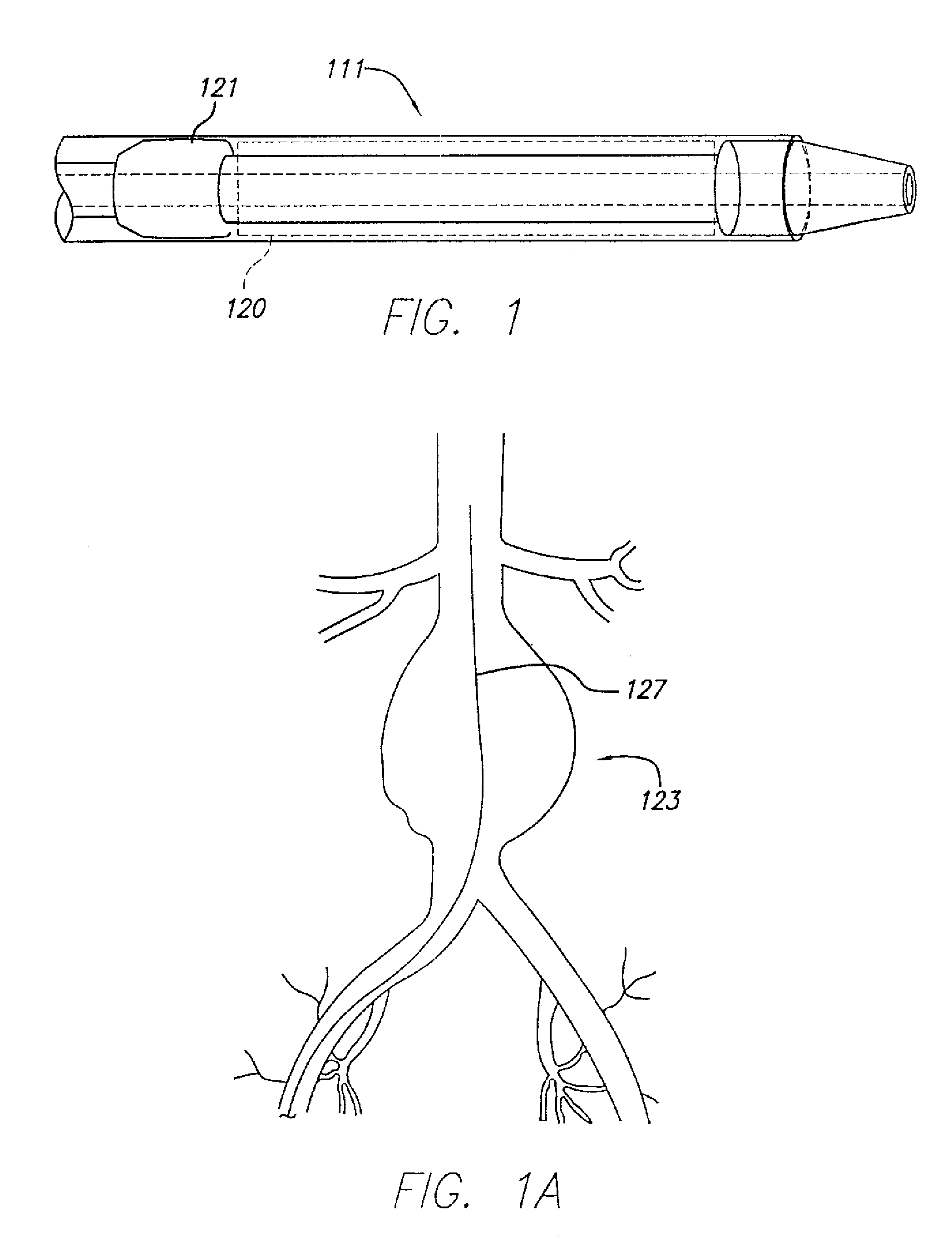Staged endovascular graft delivery system
a delivery system and endovascular technology, applied in the field of staged endovascular graft delivery system, can solve the problems of life-threatening, significant life-threatening or significant morbidity of surgical repair, drawbacks of current methods, etc., and achieve the effect of reducing redundancy and profile, and being convenient to operate or perform
- Summary
- Abstract
- Description
- Claims
- Application Information
AI Technical Summary
Benefits of technology
Problems solved by technology
Method used
Image
Examples
Embodiment Construction
[0082]The present invention relates to systems and methods for accurately delivering and deploying the individual components of a endovascular graft at a treatment site within a patient's vasculature.
[0083]In one aspect, the invention is embodied in a system and method that accomplishes delivering a main graft component within vasculature using a delivery system embodying a jacket which is retracted to deliver the main graft component. The jacket is left within the vasculature and the remaining portions of the delivery system are withdrawn. The jacket is then employed as a sheath and jacket for the advancement and delivery into vasculature of subsequent medical devices. The jacket includes a hemostatic seal that prevents bleeding when exchanging capsules. Each of the subsequent devices is initially held in a capsule that mates with a proximal end of the jacket and is advanced within the jacket using a pusher device. At the time of deployment, the pusher can be held stationary and th...
PUM
 Login to View More
Login to View More Abstract
Description
Claims
Application Information
 Login to View More
Login to View More - R&D
- Intellectual Property
- Life Sciences
- Materials
- Tech Scout
- Unparalleled Data Quality
- Higher Quality Content
- 60% Fewer Hallucinations
Browse by: Latest US Patents, China's latest patents, Technical Efficacy Thesaurus, Application Domain, Technology Topic, Popular Technical Reports.
© 2025 PatSnap. All rights reserved.Legal|Privacy policy|Modern Slavery Act Transparency Statement|Sitemap|About US| Contact US: help@patsnap.com



